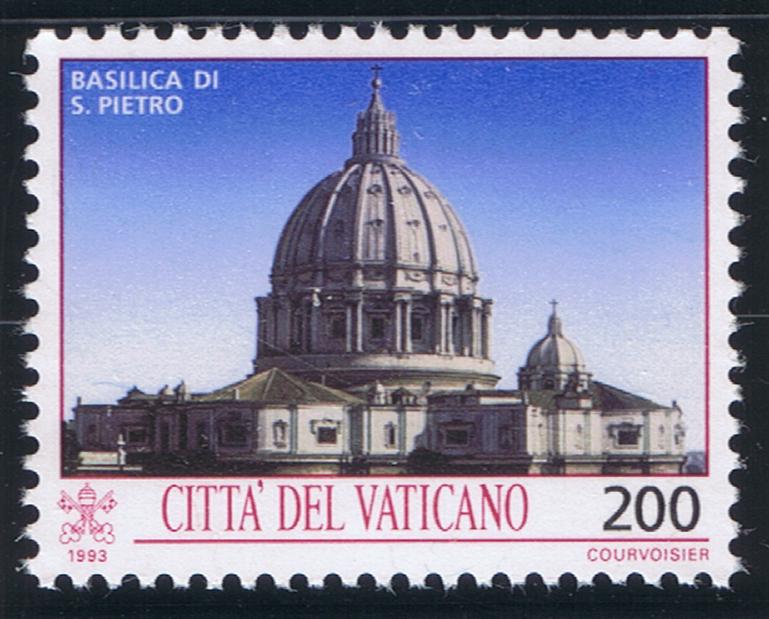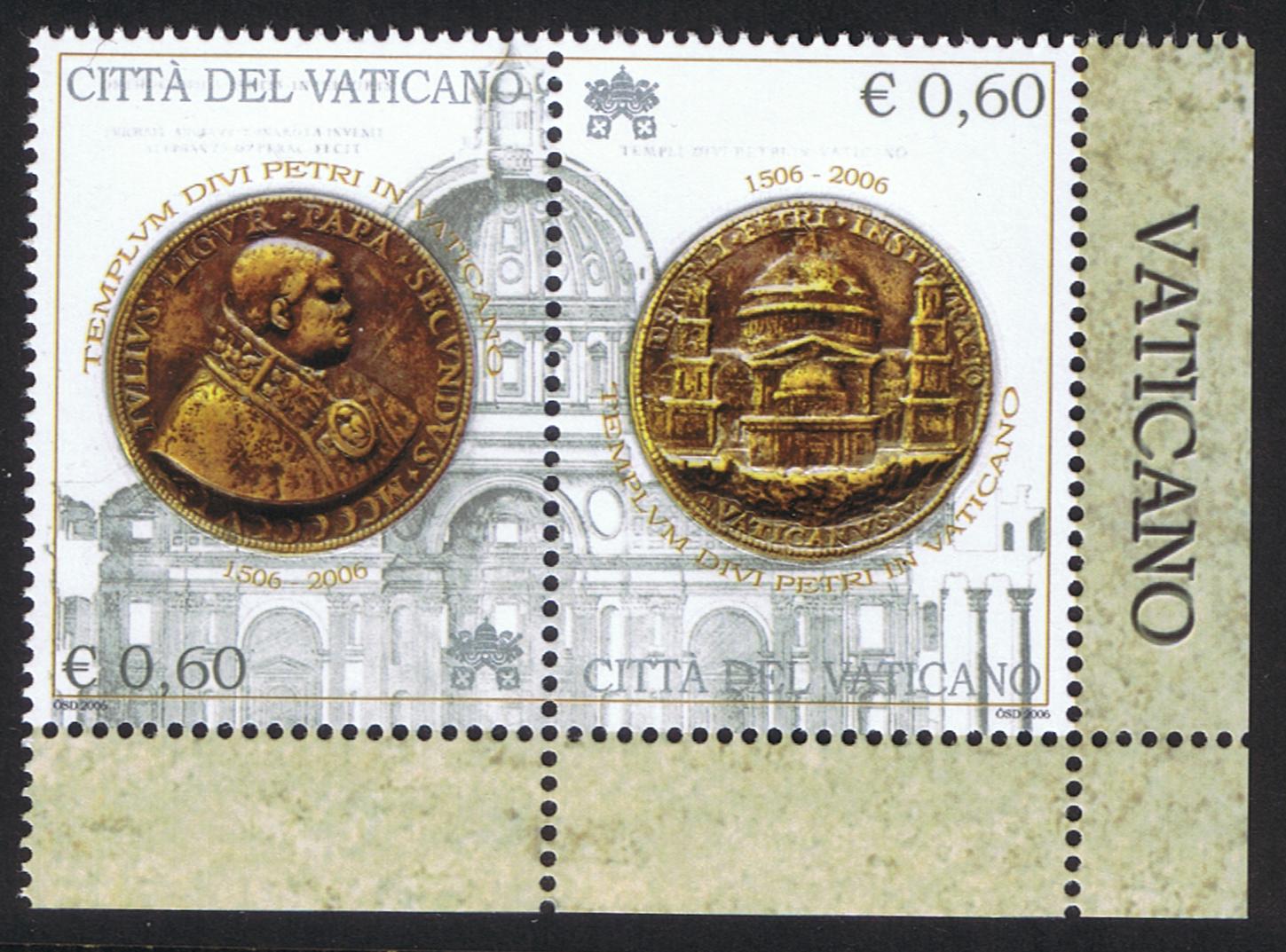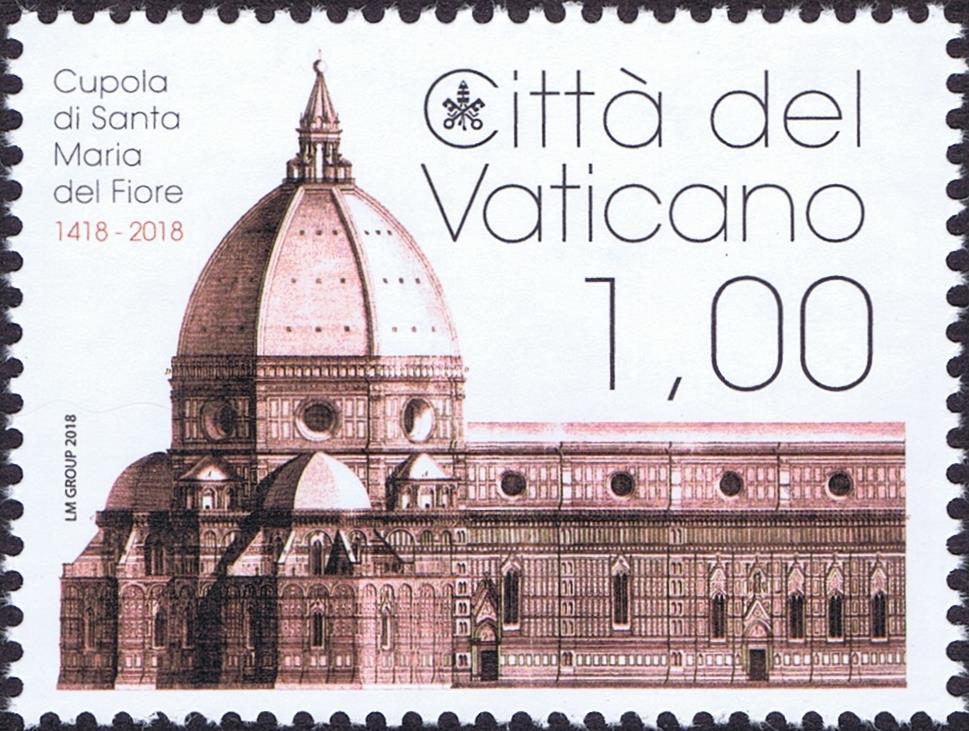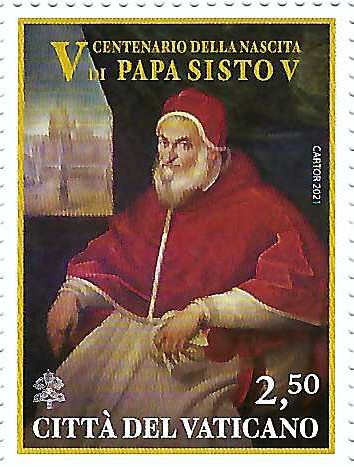
Home

 

 Images of the Dome of Saint Peter's Basilica Gardens & Medallions Issue (Scott 24, 1933) Postal Card (1949) Air Mail Issue of 1953 (Scott C22-C23) Art Treasures Issue of 1993 (Scott 917) Did you know that one of the most iconic structures in the world, the dome of Saint Peter’s Basilica, was in danger of collapse within the first 150 years of its construction? Last year, I had the opportunity to read a couple of books telling the stories of two of the architectural marvels of the Renaissance. The first, Brunelleschi's Dome: How a Renaissance Genius Reinvented Architecture, by Ross King, looks at the dome of the Cathedral of Santa Maria del Fiore in Florence. The second, Saving Michelangelo’s Dome by Wayne Kalayjian, looks at the dome of Saint Peter's Basilica in Rome. In this, his first book, Mr. Kalayjian, a civil and structural engineer, presents an interesting and engaging look at the magnificent dome of Saint Peter’s Basilica, from its early designs by Bramante and then Michelangelo, its rapid construction under Pope Sixtus V, the discovery of faults and cracks during the 17th and 18th centuries, and the creation of a plan to save the dome under Pope Benedict XIV. 

 Pope Julius II and Bramante's Plans: Popes and Saint Peter's Basilica (Scott 162, 1953) 500th Anniversary of Saint Peter's Basilica (Scott 1333, 2006) Pope Julius II: The Renaissance Pope (Scott 1539, 2013) By the late 15th/early 16th century, the original Saint Peter’s Basilica had fallen into such disrepair that it was determined, by Pope Julius II, that the best course of action was to demolish the old Basilica and rebuild it on a grand scale. The project proceeded under the direction of master architect Donato Bramante, starting in 1506. Bramante died in 1514, and construction of the Basilica would continue for the next 150 years. 

 Saint Peter's Dome: Plan of Bramante (Scott 515, 1972) Michelangelo Buonarotti (Scott 387, 1964) Dome of Santa Maria del Fiore, Florence (Scott 1679, 2018) One phase of construction was the building of the grand dome. In his book, Mr. Kalayjian describes the complexities of dome construction, and he cites some of the early examples of structures with spectacular domes, including the ancient Pantheon in Rome, the Hagia Sophia in Istanbul, and the Cathedral of Santa Maria del Fiore in Florence, the home city of Michelangelo. The Duomo at Santa Maria was designed and constructed under the direction of the great Filippo Brunelleschi in the 15th century and would serve as the inspiration for Michelangelo for his design of Saint Peter’s dome. Michelangelo would not live to see the dome added to the Basilica, as construction was delayed until after his death in 1564. 
  Pope Sixtus V: Popes and Saint Peter's Basilica (Scott 164, 1953) Pope Sixtus V: Fifth Centenary of Birth (Scott 1771, 2021) 400th Anniversary of the Construction of the Dome (Postal Card of 1990) Pope Sixtus V would eventually commission Giacomo della Porta and Domenico Fontana to build the dome. After making slight alterations to Michelangelo’s design (the original design was more of a hemisphere, compared to the final elliptical shape), construction proceeded and was completed rapidly over a two-year span from 1588 to 1590. However, as early as 1603, cracks were observed in the structure of the dome. Some of the theories presented over time for the cracks include the rapidity of the dome construction project, the location of Saint Peter’s on a formerly soft patch of land, faults in the dome piers, the heterogeneity of the construction materials, lightning strikes, and earthquake activity. Whatever the case, the number and severity of the cracks in the dome increased in seriousness over time (some cracks were reportedly large enough for a person to walk through), causing great concern regarding its structural integrity. 
 Pope Benedict XIV: Popes and the Holy Years (Scott 1141, 2000) Rugerius (Roger) Boscovich: Third Centenary of Birth (Scott 1482, 2011) Benedict XIV, elected pope in 1740, was arguably one of the most well-educated popes of the second millennium, and soon after his election an investigation of the cracks was undertaken. A plan for repair was developed, not by builders or architects but by three young mathematicians: Thomas Le Seur, Francois Jacquier and Roger Joseph Boscovich. In January of 1743, they presented their initial 36-page report on the problems with the dome and a plan for repair, the short title of the report being “Parere” (“The Opinions”). Their report came under intense scrutiny from old-line architects and builders, was severely criticized, and was eventually rejected. However, the final plan developed for the pope by the great polymath of the 18th century, Giovanni Poleni, contained many of the repair elements proposed by the three mathematicians, principally the installation of five massive iron rings to support the dome’s elements from further dislocation. Under the site management of Niccola Zabaglia, the gargantuan repair work started in 1743 and was completed in December of 1744. Despite the fact that the three mathematicians were not directly involved in the repair of Saint Peter’s Dome, their investigative work would serve as the foundation for modern civil engineering, where mathematics, the study of the make-up and chemistry of building materials, the behavior of forces impacting structures, and other factors would now be taken into account, replacing guesswork and intuition when designing and constructing new buildings, bridges and other structures. The Basilica of Saint Peter’s, and its spectacular dome, stand today as marvels of engineering and construction. Rather than go further into the details of the project, and spoil the ending of the book, it is recommended that the reader check out Saving Michelangelo’s Dome. Mr. Kalayjian’s presentation of the complexities and science of the project is entertaining and not overly technical, making it very easy to absorb and understand. The book also reviews the politics, personalities and rivalries tied to the project to repair the dome. The work of the able mathematicians and the drive of Pope Benedict XIV to save the dome of Saint Peter’s is properly memorialized in the book. REFERENCES: |